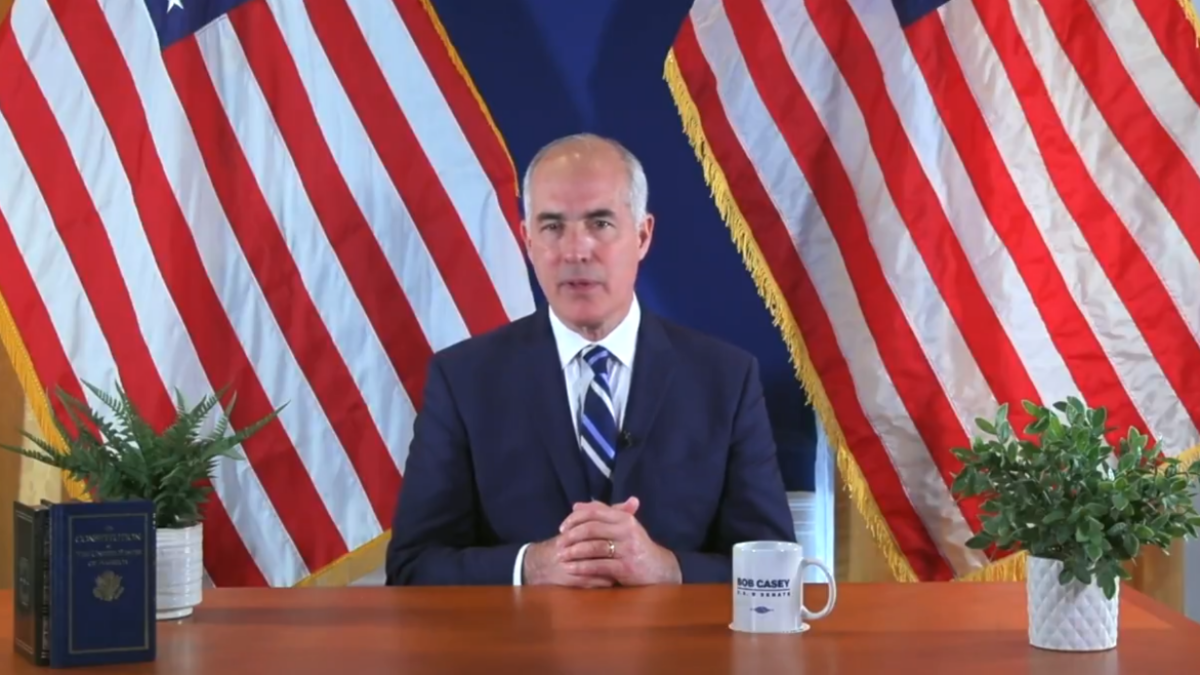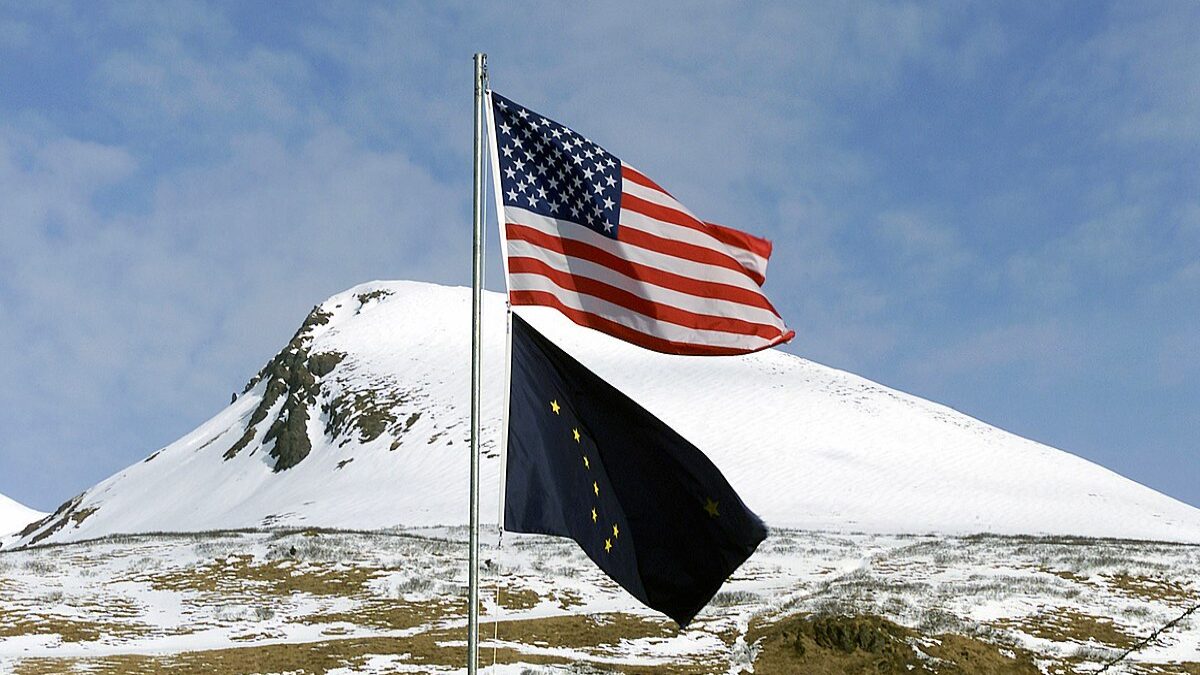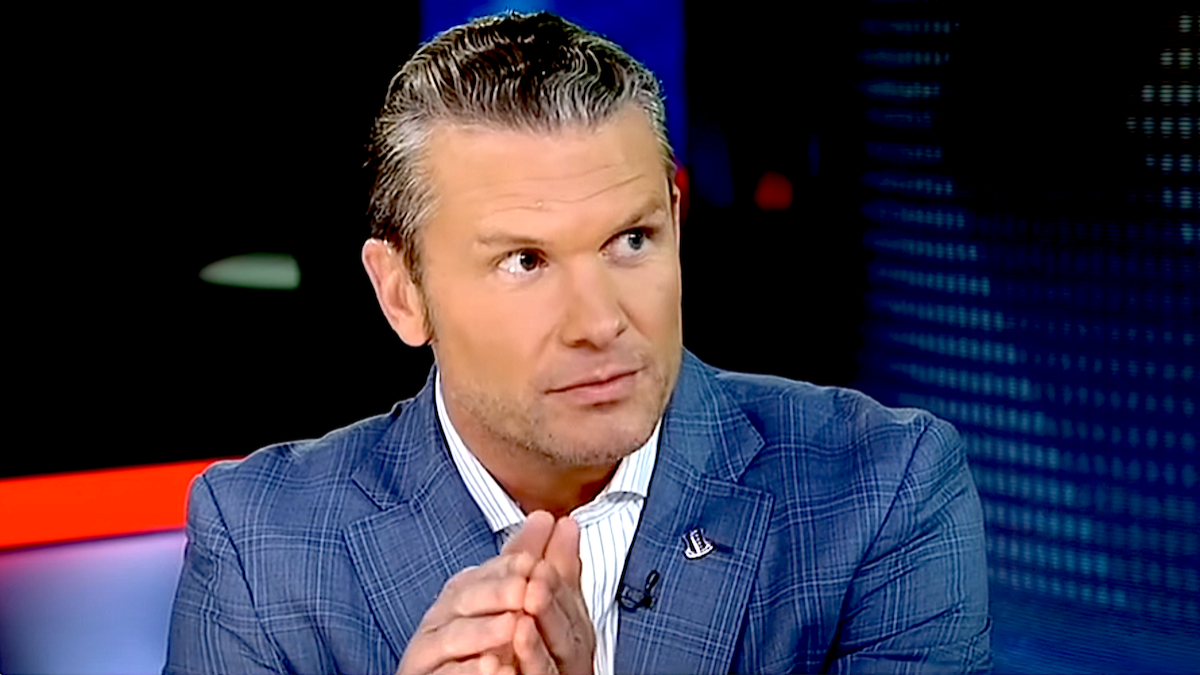
The National Football League, barely a decade old and barely solvent, saw three franchises disband before the start of the 1932 season. It added one more, for a total of eight, when the new Boston Braves took the same name as the major league baseball team with whom they shared a stadium, Braves Field. Because baseball was far more popular than professional football in the 1930s, NFL owners were not bashful about laying claim to a bit of the brand loyalty already enjoyed by baseball franchises. Other teams in the league that year included: the New York Giants, who played in the Polo Grounds, home of the baseball Giants; the Brooklyn Dodgers, who shared Ebbets Field with their baseball counterpart; and the Chicago Bears, who played in Wrigley Field, where the Cubs played baseball and, after a fashion, still do.
When, before the 1933 season, the football Braves relocated one mile east to Fenway Park, the owners changed the name to the Boston Redskins, encouraging Red Sox fans to make a connection to Fenway’s more famous occupant while obviating changes to the logo and uniforms. According to some accounts, the name was also an attempt to wring a marketing advantage from the fact that the coach, Lone Star Dietz, was part Sioux, or at least claimed to be.
The franchise remained the Redskins after relocating to Washington, D.C., in 1937, but the future use of that name is doubtful. Denunciations of it as an insult to American Indians reached a point during the 2013 football season that an interviewer asked President Obama for his position on the controversy. He replied, cautiously, that an owner should “think about changing” a team name if it “was offending a sizeable group of people.”
Of more importance to conservatives, columnist Charles Krauthammer also endorsed dropping “Redskins”—not as a matter of “high principle,” but in order to adapt to “a change in linguistic nuance.” “Simple decency,” he wrote, recommends discarding a term that has become an affront, even if it was used without a second thought or malicious intent 80 years ago. A few days before Krauthammer’s column appeared, on NBC’s “Sunday Night Football,” the highest-rated TV show throughout the football season, studio host Bob Costas called for Washington to pick a different team name. “‘Redskins’ can’t possibly honor a heritage or a noble character trait,” he said, “nor can it possibly be considered a neutral term.” Rather, it’s “an insult” and “a slur.”
The New Republic and Slate are among several journals that no longer use the name in their articles. Few football fans rely heavily on either publication, of course, but many of them read Gregg Easterbrook’s Tuesday Morning Quarterback column on ESPN.com. By calling the team either the “Washington R*dsk*ns” or “Potomac Drainage Basin Indigenous Persons,” Easterbrook both observes and spoofs the growing de facto ban on “Redskins.”
Sadly, the republic faces challenges more dire than naming a sports team. This slight question, however, entails weightier ones about comity—how a diverse nation coheres; discourse—how Americans address one another; and power—not only how we make decisions, but how we decide what needs to be decided, and who will do the deciding.
The Right Side of History
Krauthammer, Costas, and many other “Redskins” critics contend that because sensibilities change, terminology must follow. That seems undeniable as an abstract proposition, but doesn’t settle the question of whether calling a professional team the Redskins in 2014 is intolerable, either to Americans in general or American Indians in particular. “Indian” was itself a suspect word for many years, and was giving way to “Native American” around the time “Negro” was supplanted by “black” or “Afro-American,” which was abandoned in favor of “African American.” The tide receded, however. Of the 14 “National Tribal Organizations” listed on the federal government’s website, only two use “Native American” in their names, while 10—including the most important, the National Congress of American Indians—use some form of “Indian.” Apparently, a word can grow more offensive with the passage of time, but also less offensive with the passage of additional time.
That “Redskins” is an intolerable relic from the hate-filled past, though asserted often and strenuously, is not easily demonstrated. For one thing, the term’s origins are neither inherently nor manifestly derogatory. Smithsonian Institution anthropologist Ives Goddard has traced its emergence to the 18th century, when French and English settlers and explorers, and later Americans, adapted it from Indians, who developed “red men” and “redskins” to differentiate themselves from the Europeans who had come to North America.
For another, it’s far from clear that a sizeable group of people is offended by the name. A 2004 Annenberg poll asked 768 self-identified American Indians, “As a Native American, do you find [“Washington Redskins”] offensive or doesn’t it bother you?” The results were 9% and 90%, respectively. More recently, an Associated Press poll in 2013 found that 11% of all Americans thought the team needed a different name, compared to 79% opposed to changing it. The demographic subsets of the polling sample yielded no data about American Indians’ views, but did record that only 18% of “nonwhite football fans” favored getting rid of “Redskins.”
Critics of the name who acknowledge the complexities about how it emerged in the past and is regarded in the present make a more cautious argument than those who declare the name tantamount to calling a team, say, the “Washington Darkies.” In announcing Slate’s policy of refusing to use the official name of the D.C. football team, editor David Plotz described it as an embarrassing anachronism in an age when “we no longer talk about groups based on their physical traits.” (Be that as it may, Slate still refers to Americans who trace their ancestry to Africa as “blacks,” and those descended from Europeans as “whites.”) Thus, “while the name Redskins is only a bit offensive, it’s extremely tacky and dated—like an old aunt who still talks about ‘colored people’ or limps her wrist to suggest someone’s gay.” (But, as Jonah Goldberg reminded us, this daft old woman could be a donor to the National Association for the Advancement of Colored People.)
Such arguments, then, are based less on the location than the direction of the public’s opinions and sensibilities. The New Yorker’s Ian Crouch endorsed the views of one A.P. poll respondent: “Much farther down the road, we’re going to look back on this and say, ‘Are you serious? Did they really call them the Washington Redskins?’ It’s a no-brainer.” Stipulating the constant evolution of moral standards makes it possible to exonerate people who tolerated a problematic team name in the past. Bob Costas, for example, had given no indication that “Redskins” was an insult and a slur in his 39 years as a sports broadcaster up until 2013. Prior to former owner Jack Kent Cooke’s death in 1997, guests who watched home games with him in the owner’s box included Al Gore, George McGovern, Earl Warren, Tip O’Neill, and Eugene McCarthy, none of whom was criticized for endorsing a racist pageant by their attendance. (The fact that standards evolve does not, however, compel such exonerations. People or categories of people liberals don’t like, such as Christian fundamentalists or whites insufficiently committed to racial equality, are still condemned for failing to anticipate or embrace the emerging moral strictures.)
Those who now want the Washington Redskins to be called something newer and nicer are, it follows, “on the right side of history,” a polemic wielded with increasing frequency. Last year the National Journal offered a partial list of the many political positions President Obama has declared to be on the right side of history, including support for the Arab spring protestors, Obamacare, and immigration reform. Some of his admirers have urged Obama to stay on the right side of history by preventing construction of the Keystone oil pipeline. Others applauded him for finally getting on the right side of history when, in May 2012, he declared himself a supporter of gay marriage.
The “right side of history” is a recent addition to the lexicon, but the idea behind it is quite old. We, in the second decade of the 21st century, may say that the cause of the future has by now acquired a substantial legacy from a past stretching back to the late 19th century. Those who read the CRB and, in particular, the work of its editor Charles Kesler, are well aware that since Progressivism appeared on the American scene, its -ism has been that a better future beckons, but is not simply destined. To realize it we’ll need visionary leaders who advocate and facilitate progress. They see clearly what most see dimly: how the future will be better than the present, and what we must do to progress from where we are to where we need to go.
In The Screwtape Letters, C.S. Lewis identified the central contradiction of invoking tomorrow’s standards to settle today’s controversies. Screwtape, an upper-management devil sending advisory memoranda to an apprentice, counsels:
[God] wants men, so far as I can see, to ask very simple questions; is it righteous? is it prudent? is it possible? Now if we can keep men asking, “Is it in accordance with the general movement of our time? Is it progressive or reactionary? Is it the way that History is going?” they will neglect the relevant questions. And the questions they do ask are, of course, unanswerable; for they do not know the future, and what the future will be depends very largely on just those choices which they now invoke the future to help them to make.
As journalist Michael Brendan Dougherty recently contended, “the most bullying argument in politics” is to denounce people with whom you disagree for being on the wrong side of history. “If your cause is just and good, argue that it is just and good, not just inevitable.”
It’s particularly insufferable that American liberals, otherwise boastful about their membership in the “reality-based community,” are so facile about resorting to metaphysical mumbo-jumbo when appointing themselves oracles of the Zeitgeist. Upon inspection, “X is on the right side of history” turns out to be a lazy, hectoring way to declare, “X is a good idea,” by those evading any responsibility to prove it so. Similarly, many brandish another well-worn rhetorical club, as when a sportswriter charges that current Redskins owner Dan Snyder refuses to rename his team because he just doesn’t “get it.” That huffy formulation conveniently blames someone else’s refusal to see things your way on his cognitive or moral deficiencies, rather than on your forensic ones.
Bending Toward Justice
Things do change, of course. history, society,…life are all dynamic, not static. The quotidian work of politics, in particular, is more concerned with accommodating and channeling the transient than with realizing eternal Platonic forms. “A majority,” Abraham Lincoln said in his First Inaugural, “held in restraint by constitutional checks, and limitations, and always changing easily, with deliberate changes of popular opinions and sentiments, is the only true sovereign of a free people.”
Notwithstanding the opinion polls showing a large majority untroubled by “Washington Redskins,” there clearly has been a deliberate change away from cartoonish, disrespectful references to Indians by sports teams. In 1986, the Atlanta Braves baseball team (formerly the Boston franchise, relocated by way of Milwaukee) got rid of “Chief Noc-a-Homa,” a mascot who would emerge from a teepee beyond the left field fence to perform a “war dance” after every Braves home run. Some major college athletic programs have renamed their teams: the Stanford Indians became the Cardinal; Marquette’s Warriors are now the Golden Eagles; and the St. John’s Redmen the Red Storm. The Redskins retain their team name and fight song, “Hail to the Redskins,” but have changed the words. Fans no longer sing, “Scalp ’em, swamp ’em—we will take ’em big score / Read ’em, weep ’em, touchdown!—we want heap more!”
It would be astonishing if anyone started a campaign to bring back Chief Noc-a-Homa, or to restore the Redskins fight song’s original lyrics, much less for such an effort to succeed. History may close no questions, but some are exceedingly unlikely to be reopened. It’s an unwarranted leap, however, from these developments to the judgment by Marc Tracy, a New Republic writer, that polls showing only a small portion of the population shares his outrage at “Washington Redskins” are irrelevant. He claims it doesn’t matter how few people oppose the name because it is “objectively offensive,” a judgment not obviously true or even coherent, since taking offense would seem to be highly subjective. The suspicion that Tracy thinks it sufficient to demand that sensibilities like his should prevail because that’s what he really, really wants is supported by his catalog of other athletic teams with Indian names or logos he finds objectionable. That the University of Utah has official permission of the Ute Nations to call its teams the Utes, for example, does not banish Tracy’s doubts about the seemliness of the athletic program’s logo, which shows two feathers attached to the letter U. He considers the arrowhead in the San Diego State Aztec’s logo even more shameful.
Being on the right side of history is about timing—but not just about timing. There’s more to it, that is, than getting where the crowd is headed a little before the crowd arrives, the key to making money in equities or real estate. The right side, for progressives, is the side they deem right, not just the thing that happens next. The causes that deserve to win are destined to prevail because, as Martin Luther King said in 1965, the “arc of the moral universe is long but it bends toward justice.”
That famous declaration, like others made in sermons, neither lends itself to nor profits from scrutiny. For one thing, it’s unfalsifiable—an assertion that something will eventually come to pass can always be defended on the grounds that it hasn’t come true yet. For another, what justice means and requires is the subject of an old, profound debate, not a standard that settles political problems the way the definition of an isosceles triangle settles geometry problems. King’s heavy reliance on the concept of the “beloved community” argues that he relied on an understanding of justice for which the descriptor “expansive” is much too narrow. “For Dr. King, The Beloved Community was not a lofty utopian goal,” the Martin Luther King, Jr., Center for Nonviolent Social Change states, before describing it in lofty utopian terms as “a global vision, in which all people can share in the wealth of the earth.” In this vision, “poverty, hunger and homelessness will not be tolerated,” “all forms of discrimination, bigotry and prejudice will be replaced by an all-inclusive spirit of sisterhood and brotherhood,” and “international disputes will be resolved by peaceful conflict-resolution and reconciliation of adversaries, instead of military power.”
Identity Politics
That vision, suffice to say, doesn’t rule out very much, either in terms of grievances or the measures needed to rectify them. Since King’s death 46 years ago, it has ruled in more and more. According to the Hoover Institution’s Tod Lindberg, the historical tide demanding ever greater equality—the subject of Tocqueville’s Democracy in America—at first rendered political differences untenable, resulting in government by consent of the governed, expressed though universal suffrage. It then found economic disparities unacceptable, which led to efforts to reduce them with proletarian revolution, socialism, and welfare states. It now finds social differences among various groups intolerable. In order to “bring down the status of the privileged and elevate the status of the denigrated,” Lindberg writes, those described by various markers of social identity—race, sex, class, sexual orientation, ethnicity, etc.—must all be accorded full and equal regard.
The attainment of perfect political or economic equality is highly unlikely, but can be described intelligibly, even as it is possible for political and economic inequalities to be objectively assessed. By contrast, equal social status rests on subjective feelings of being included and affirmed, rendering it as nebulous in theory as it is elusive in practice. Although a perfectly homogenous society might achieve absolute equality of social status, the “Tocqueville effect” argues that increasing equality always renders remaining inequalities all the more noticeable and suspect. As long as humans are not identical there will be differences among them, which will give rise to real or perceived inequalities.
In any case, the point of social equality is not to eliminate differences but to celebrate them. The psychological strength that follows from this achievement is the embrace, not the denial, of one’s nature and heritage. Thus, the National Congress of American Indians (NCAI) demands abandoning “Washington Redskins” because, when exposed to “Indian-based names, mascots, and logos in sports,”
the self-esteem of Native youth is harmfully impacted, their self-confidence erodes, and their sense of identity is severely damaged. Specifically, these stereotypes affect how Native youth view the world and their place in society, while also affecting how society views Native peoples. This creates an inaccurate portrayal of Native peoples and their contributions to society. Creating positive images and role models is essential in helping Native youth more fully and fairly establish themselves in today’s society.
The NCAI position paper, whose weakest claims echo the notorious “doll experiment” argument of 1954’s Brown v. Board of Education decision, moves directly from these premises to discuss how Indians are disproportionately likely to be victims of suicide and hate crimes. It does not even attempt to establish a causal relationship between these dire outcomes and the psychological changes it deplores. What’s more, its social scientific argument for a cause-and-effect relationship between Indian mascots and Native youth’s impaired self-esteem and confidence rests entirely on a single, ten-page conference paper by an assistant professor of psychology.
But whether the links in the empirical chain between team names and logos, on the one hand, and depression and suicide, on the other, are sturdy or flimsy is not really the point. Last December, Melissa Harris-Perry, a Tulane University political science professor, found herself attacked for a segment on the MSNBC television show she hosts. Two days after Harris-Perry and her panelists made derisive references to a Romney family photograph that included an adopted black grandchild sitting on the former governor’s lap, she posted to her Twitter account, “Without reservation or qualification…I want to immediately apologize to the Romney family for hurting them.” She explained the basis for this apology in the compressed locution of Twitter: “I work by guiding principle that those who offend do not have the right to tell those they hurt that they r wrong for hurting.”
Though explaining a great deal about life in 21st-century America, this guiding principle offers very little guidance for navigating the political and social terrain. Harris-Perry rules out the possibility of a false positive: if you r hurting, you were offended. By this illogic, claims to having been hurt and offended—or at least ones put forward by groups formerly or presently victimized by discrimination—are never dishonest, mistaken, or overwrought. There are no innocent explanations because the subjective experience of having been hurt necessarily means that the offenders are indeed guilty of inflicting a wound. For them to protest to the contrary only compounds the original offense, as it further denigrates the injured party by signaling that their hurt feelings are trivial, contrived, or spurious.
At a January 2014 news conference before the season premiere of the HBO series Girls, Tim Molloy, a television reporter and critic for The Wrap, a webzine covering show business exhaustively, posed a question to Lena Dunham, creator, executive producer, and star of the show. In the Associated Press summary of the event, Molloy asked Dunham “why her character was so often naked and for no apparent reason.” The question, which has occurred to many people who have watched and written about Girls, may or may not have had a subtext, but certainly had a context. The economic context is that premium cable channels, which derive all their revenue from subscribers because they show no commercials, offer nudity, sex, profanity, and violence unavailable on broadcast TV or basic cable. The obvious purpose is to remind viewers incessantly that their subscription dollars purchase a kind of raw entertainment they won’t see elsewhere.
The political context is that the women shown in the nude on premium-cable are almost always exceptionally attractive rather than ones with average faces and figures. (Dunham is closer to the latter than to a swimsuit model.) “In a culture where only traditionally beautiful women are asked to disrobe on screen,” Nico Lang wrote for the Los Angeles Times, “Dunham is forcing us to reconsider what bodies we value and why.” By showing her character naked so frequently, “Dunham is sending female viewers an important message: You have value, no matter your body type.”
This is an argument, echoed by several other feminist bloggers, one might accept or reject. The reaction to Molloy’s question at the press conference, however, was that the topic was one only an odious cretin would even mention. The nudity on Girls, is “a realistic expression of what it’s like to be alive,” Dunham told Molloy. “If you are not into me, that’s your problem, and you are going to have to kind of work that out.” Her co-producers were far less restrained. One, Jenni Konner, informed the journalists that she was in a “rage spiral” at the thought that Molloy presumed to “talk to a woman” that way. Another, film director Judd Apatow, told Molloy that his question was “offensive on its face,” both “sexist…and misogynistic.” The way he asked it, Apatow continued, “shows a lack of depth in how you watch the show” and “came out much darker, edgier, and negative than you realized.”
The disproportion between Molloy’s question and the fierce response to it demonstrates Harris-Perry’s guiding principle at work. The Dunham/Kenner/Apatow position is: 1) Molloy crossed the line; 2) we’re not going to say where the line is; 3) we’re also not going to say why the line is where it is, rather than somewhere else, or who decided it should be drawn in that particular location; 4) it’s also crossing the line to challenge Nos. 1, 2, or 3. If Molloy doesn’t understand why his question was contemptible, then his inability or refusal to recognize the boundaries of decent discourse is one more reason to condemn him.
Tolerance, Old and New
It’s noteworthy that the Girls producers got nowhere near a rage spiral when the press conference turned, in the A.P. account, to questions “about the show’s lack of a regular minority character, despite its setting in diverse New York City.” Instead, switching immediately from playing offense to defense, they took a couple of practice spins at the top of a guilt spiral. “In the history of television, you could look at every show on TV and say, ‘How come there’s not an American Indian on this show?’ ‘How come there’s not an Asian person on this show?’” Apatow said. “We need to talk about diversifying the world of television, and we are trying to continue to do it in ways that are genuine, natural, intelligent,” Dunham added.
In short, although the rules governing the behavior of the privileged toward the denigrated are clear and exacting, the ones concerning conduct among those with some claim to having been denigrated are hazy and provisional. That disparity does not lend itself to sustaining a free and equal society. In November 2004 Dutch filmmaker Theo Van Gogh was murdered on the streets of Amsterdam by a Dutch-Moroccan Muslim enraged by Van Gogh’s movie, Submission, about Islam’s oppression of women. Some weeks later, the New Yorker’s Ian Buruma, analyzing the shocking assassination, reported wistfully that “the Dutch prided themselves on having built an oasis of tolerance, a kind of Berkeley writ large, where people were free to do their own thing.” In films, writings, and speeches, Van Gogh had insisted pugnaciously that tolerance mandates intolerance of the intolerant. Thus, in Buruma’s summary of his thinking, “To show respect for Islam without mentioning the Islamic oppression of women and homosexuals was an act of disgusting hypocrisy.” At the time of Van Gogh’s murder, one tenth of Holland’s population consisted of immigrants, many of them Muslims. Tolerating their presence and tenets, while upholding the ideal of equal respect for all viewpoints and lifestyles, proved to be an exercise in squaring the circle.
It turns out life in places like Berkeley or Amsterdam, where modern tolerance is pervasive, makes citizens poor stewards and defenders of tolerance. To experience tolerance and nothing else makes tolerance seem so agreeable and natural as to render incredible the thought that it is, historically and anthropologically, exceptional rather than normal. Those habituated to tolerance find it impossible to take seriously the idea that some regard a society where all are free to do their own thing appalling rather than elevating. And when these opponents of tolerance reject it not just utterly but violently, tolerance becomes indistinguishable from cowardice—not only the physical cowardice of those stalwart defenders of freedom prepared to repel crime and terrorism with seminars and editorials, but also the moral cowardice of good liberals who cannot bring themselves to deplore intolerance, even brutality, perpetrated by groups having any claim on victimhood, as opposed to transgressions committed by groups that can be reassuringly categorized as bigoted oppressors. After Van Gogh’s murder, his collaborator on Submission, the Somali-born Dutch politician Ayaan Hirsi Ali, went into hiding. When the government found it too expensive, difficult, and above all awkward to protect her, it eventually forced Hirsi Ali to emigrate to the United States.
Tolerance negates itself not only by tolerating too much, but too little. Classical, Lockean toleration was confined to “matters concerning property and the body,” in the words of political scientist Peter Berkowitz, leaving to religion questions about “the heart and mind.” Thus, “Provided that they can be counted on to respect the laws that prohibit theft and violence, believers of diverse and conflicting religious persuasions should be free to worship as they see fit.” Modern toleration is vastly more ambitious. It “demands not merely enduring but embracing the diverse.”
In this view, it is not enough to reconcile oneself to living with those whose views and conduct rub the wrong way. Instead, citizens must learn to see a wide range of views and lifestyles that differ from their own as intrinsically worthy, deserving of admiration and even enthusiasm.
Central to modern toleration is a “commitment to the view that all cultures and peoples are good, but especially peoples and cultures that are minority and non-Western.” As a result, writes Berkowitz, tolerance now
puts the state in the invasive business of regulating and re-educating hearts and minds. It transforms disagreements about social policy concerning blacks, women and gays into issues of personal integrity and even mental health, diagnosing non-conforming utterances and thoughts as moral and intellectual pathology.
In the classical formulation, people with diverse viewpoints and backgrounds maintain a cohesive society by agreeing to obey a set of rules, a mutual non-aggression pact. As long as your beliefs and practices don’t adversely affect me I won’t interfere with them, even if I find them wicked or stupid. And you’ll reciprocate by extending me the same terms.
Modern tolerance demands that we go beyond this narrow political understanding to a broad psychological, sociological one. The success of pluralism is not secured by obeying the rules of the game, that is, but depends heavily on the spirit in which we play it. People need and deserve not just the freedom to march to their own drummer, but to be honored, respected, affirmed, and validated. If they’re not, the deprivation could generate “a feeling of inferiority as to their status in the community that may affect their hearts and minds in a way unlikely ever to be undone,” in the words of Brown v. Board of Education.
So, mutual non-aggression is not enough. We need mutual respect, support, and encouragement. One could imagine a feasible, admirable conception of this effort to build a communitarian dwelling on a contractarian foundation, one stipulating that precisely because a system that maximizes liberty makes social life a contact sport, it works best—and perhaps only—within an ethos of restraint and comity. William Kristol addressed that challenge in 1995 when he urged conservatives to attend to “the politics of liberty” and “the sociology of virtue.”
Modern tolerance, however, as understood and practiced by the Left, is not satisfied by encouraging kinder, gentler attitudes and behaviors. It mandates them, reversing the civics class bromide about rights entailing obligations. The moral obligation to extend respect and encouragement now engenders a right to receive them. Such a right renders any failure or refusal to offer respect and encouragement a transgression—a rights violation. Those violations, in turn, justify social and even legal sanctions against the transgressors, who are not exonerated by insisting that their actions and attitudes, to paraphrase Thomas Jefferson, neither pick any pockets nor break any legs.
Wedding Cakes and Photographs
The intolerance of modern tolerance was on display when a caterer, florist, and photographer were each subjected to civil and criminal legal actions, as well as social abuse, for refusing to sell their services to couples planning same-sex weddings. In Albuquerque, Elane Photography was fined by New Mexico’s Human Rights Commission for declining to photograph a same-sex commitment ceremony, a ruling upheld by the state supreme court. After an Oregon bakery made a similar decision, the couple it declined to serve filed a complaint with the state’s Bureau of Labor and Industries. The official in charge of the investigation provided a re-education camp director’s rationale for his Bureau’s efforts: “The goal is to rehabilitate. For those who do violate the law, we want them to learn from that experience and have a good, successful business in Oregon.” By the time the agency ruled the bakery had discriminated on the basis of sexual orientation, the proprietors had already closed their shop and retreated to a custom business based in their home, after protests, boycotts, and death threats.
Slate’s Mark Joseph Stern has helpfully spelled out the ideology that justifies these sanctions. A photographer or baker who declines the patronage of a gay couple seeking his services for a wedding, even if he would accept their business for any other occasion, is morally indistinguishable from segregationists Bull Connor and Lester Maddox: “the real victim isn’t the business owner who acted on his hatred, but the customer who suffered from his discriminatory policies.” That suffering might seem limited to being reminded that some Americans still oppose same-sex marriage, prior to enduring the trauma of dialing the phone number of the next photographer or baker listed in the Yellow Pages, but those who offend do not have the right to tell those they hurt that they are wrong for hurting. The merchants’ refusal, according to Stern, can have no motive and explanation other than “a hatred of gay people so vehement that they’ll violate non-discrimination laws just to make sure they never, ever have to provide a gay person with a basic service.”
In the same vein, Robin Abcarian of the Los Angeles Times declares that opposing or even having misgivings about gay marriage is no longer an option for decent and reasonable Americans: “Marriage equality is at the very heart of gay civil rights. If you can’t be married, you can’t be equal.” Getting on the right side of history requires “coming to terms with the reality of the social landscape. Gay marriage is out of the bag and it’s not going back in.”
This plausible assessment of the social landscape aligns with the one President Obama made in 2012 when he concluded that supporting gay marriage was, on balance, electorally advantageous. (He had decided in his 2008 campaign that opposing it was the better part of valor.) If gay marriage is out of the bag and not going back in, however, it’s fair to inquire what other items have yet to be unpacked. Progressivism, Lindberg points out, “implies not only improvement over time, but a progression: Correct the perceived injustice most immediately at hand, then move on to the next one.” Political calculations figure prominently in determining the sequence.
So, according to Boston College law professor Kent Greenfield, writing for the liberal American Prospect, the campaign to demolish the legal barriers to polygamy and incest is at hand. He argues that in the wake of the 2013 Supreme Court decisions upholding gay marriage, “it’s time for the political left to own up” to the fact that, just as conservatives have often alleged, “there is indeed a slippery slope between recognizing same-sex marriages and allowing marriages among more than two people and between consenting adults who are related.” Those who, like Greenfield, support same-sex marriage need to own up because, he contends, the arguments distinguishing their cause from legalizing polygamous and incestuous marriage are all notably weak. Claims that polygamy and incest are unnatural simply echo the arguments against gay rights and gay marriage, now in retreat on the political battlefield. As long as the laws regarding age-of-consent and divorce allow voluntary entrances and exits from marriage, polygamous and incestuous marriages are no more coercive than any other kind. Finally, Greenfield disputes the idea that “sexual orientation is hard wired, but polygamy and incest are choices.” In fact, “arguments for marriage equality do not really depend on the claim that people have no choice about who they are.” The case for gay marriage would not be weakened by the discovery that sexual orientation can be chosen rather than predetermined, he contends, even as the case for polygamous or incestuous marriage does not depend on whether the desire to enter into them is a choice or a biologically determined destiny.
The Business of Being Offended
I raise these points not to weigh in on the gay marriage debate, but to see modern tolerance in full. For the moment, advocating polygamous and incestuous marriage appears premature—not on the wrong side of history, exactly, but too far ahead of deliberate changes of popular opinions and sentiments to be on the right side…yet. It follows that a business owner who declined to photograph the ceremony or cater the reception for five people getting married, or siblings getting married, or five siblings getting married, would probably be spared accusations that his reactionary refusal betrayed the kind of vicious hatred that denies others the dignity essential to their self-esteem and social equality.
Modern tolerance does not aspire to the reciprocity classical tolerance sought, under which the spirit of live-and-let-live was to operate in all directions with equal force, rather than just for the benefit of some and to the detriment of others. Nonetheless, it might acquire a measure of self-restraint by incorporating the notion that making the right side of history the ultimate arbiter of all disputes argues for judging those on the wrong side less rather than more severely. The incumbent and preceding Democratic presidents are fond of quoting Judge Learned Hand’s maxim that the spirit of liberty is not too sure it is right. Many of their admirers pervert that rule’s meaning, however, by using it to condemn opinions they oppose rather than to examine and moderate the ones they hold. To scorn everyone else’s self-righteousness is the worst kind of self-righteousness.
There is another anomaly about modern tolerance. We live in a time when it is bad to be insensitive, but good—as in frank, bold, and authentic—to be “provocative.” The easiest, most common way to be provocative, however, is to provoke the sensitive by being insensitive. And the easiest, most common way to leverage the moral authority of having been denigrated and marginalized is to insist there are no minor slights or innocent misunderstandings, only intolerable violations that cruelly inflict irreparable psychological damage on the victims. As a result of these contradictory imperatives, the national narrative is now punctuated every few weeks by the story of some media figure—Paula Deen, Phil Robertson of Duck Dynasty, Alec Baldwin, Martin Bashir, Jerry Seinfeld—who gave offense, got denounced, expressed contrition, and was or was not rehabilitated before we all lost interest as the next drama unfolded.
Americans would enhance domestic tranquility by giving offense—but also by taking it—less readily. Those having, or claiming to have, porcelain egos may secure political victories by wielding the power to shame and silence, but do not deserve respect. As the whole world becomes a china shop, the only way to avoid being a bull, or a bully, is to stand perfectly still, endlessly.
Demanding that people never say anything that might be taken as an affront creates perverse incentives, however. As it becomes clear that efforts not to offend are futile, being a bull becomes a way to rebuke the china shop’s proliferating, arbitrary, asymmetrical rules. For his own safety and Holland’s concord, it would have been better if Theo van Gogh had not routinely referred to that country’s Muslim population as “goat f**kers.” When, however, the governing pieties become utterly suffocating, being as offensive as possible comes to seem like the only way to raise questions ruled unfit for polite society—like the status, rights, and duties of Muslim immigrants in the Netherlands—as well as to protest the whole regime of discourse propriety. Twenty-first-century American conservatives may be tempted to emulate van Gogh by, for example, defending “Washington Redskins” unreservedly and campaigning to bring back Chief Noc-a-Homa in the bargain. If you’re going to be denounced for insensitivity no matter how hard you try to play nice, in other words, you may as well go out of your way to play rough.
Even if that path didn’t lead to assassination attempts, however, pledging lives, fortunes, and sacred honor to the cause of gratuitous provocation amounts to a course of rebuking modern tolerance with impudent but futile gestures. A better approach would be to win what can be won, which does not appear to include the sociology of virtue as Kristol characterized it 19 years ago. The deliberate changes of popular opinions and sentiments on the question of gay marriage and marijuana legalization, for example, are moving steadily in directions most conservatives have opposed. The sociology of virtue, forging a consensus about what virtue requires and forbids, really will have to operate sociologically, from the bottom up, rather than politically from the top down.
The politics of liberty, however, still offers a basis on which to defend pluralism and classical tolerance. If there’s a lot Americans can’t agree on, in other words, they need to get better at agreeing to disagree by refocusing on the rules of the game instead of the spirit in which it’s played. This gets politics back to upholding people’s rights, and out of the business of sparing their feelings. Thus, by virtue of having purchased Washington’s NFL franchise, Dan Snyder can call the team whatever he likes, calibrating as he sees fit the best response to the minority of American Indians offended by “Redskins” and the offsetting benefits of retaining an 80-year-old name. For all of the editorializing, then, it isn’t really a political question. The same can be said for Elane Photography’s decision not to photograph a same-sex commitment ceremony, or the Hobby Lobby’s resistance to Affordable Care Act rules mandating employee health care benefits that include abortifacients.
“Some people are in the business of being offended,” writes Thomas Sowell, “just as Campbell is in the business of making soup.” But as Sowell, an economist, advises, enterprises flourish when they are profitable, and grievance manufacturing is a growth industry because its practitioners “can get political or financial mileage out of being offended.” A diverse society cannot make tolerance work unless the government is vigilant about protecting our rights instead of our self-esteem. That retrenchment would help put America’s grievance-industrial complex out of business.
William Voegeli is a senior editor of the Claremont Review of Books, where this essay previously appeared, and author of The Pity Party: A Mean-Spirited Diatribe Against Liberal Compassion, to be published this fall by Broadside Books.









